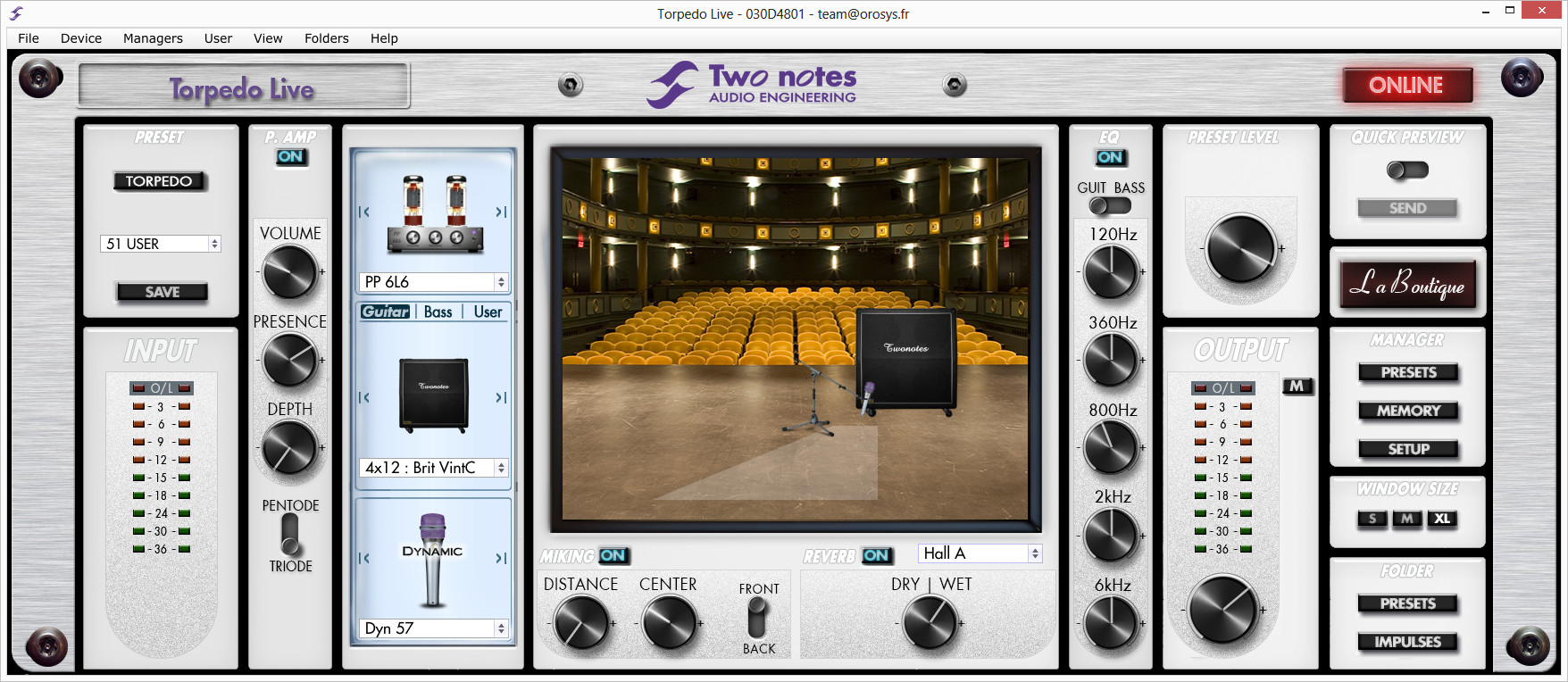I had a lot of questions after my first blog post — “How to get a great guitar tone at any volume”. Here’s a few and I’ll add more over time. Feel free to ask more questions in the comments.
What if I have an amp/speaker combo, not just an amplifier head?
You can still use a reactive load box with it. Unplug the internal speaker and go straight into the load box. Be careful to match the correct output impedance on the reactive load to the output impedance of the amplifier.
Why speaker simulation (Torpedo C.A.B.) instead of a speaker cab?
Volume — speaker cabs are loud. The Torpedo C.A.B. allows me to:
- Get rid of the volume.
- Use any speaker cabinet I wish* to use with my amplifier using Impulse Responses (IRs).
- Use any microphone in the world* to “record” the sound of that cabinet and place it anywhere I like in relation to the cabinet.
- Use more than one microphone if I want to, and more than one cab too…by mixing IRs.
* These are digital sound files that capture the frequency response of real cabinets, and are available online. E.g. Marshall 4x12 with vintage 30’s. SM57’s and Rode mic’s — all top of the range stuff that has been modelled through the IR capture process by professionals worldwide and made available to us mere mortals, who can only dream of owning this expensive gear!
Where does the sound come from? Does the Two Notes C.A.B. have a speaker in it?
There’s no speaker in the C.A.B., there’s a line out or headphone out.
Does the Two Notes C.A.B. have to run through a pc?
No, it’s a pedal — so essentially puts the “speaker cabinet” (IR) at your feet, for convenience. Although, I run my line out through stereo FX and into my PC via an interface so I can record its sound in Ableton and then play it back through my monitors.
What would be the connections (for a basic set up)?
Guitar > pre-amp FX > amp send > fx loop fx > Amp return (speaker out) > Reactive load box (Suhr)> Two Notes Torpedo C.A.B. > stereo FX > Your choice of computer interface to record / powered monitors (studio monitors like the ADAM A5X or FRFR (full range frequency response / flat response) speakers (Matrix FR10/FR12 for example are great) / Headphone out of the Torpedo C.A.B..
How would I get my signal from the stereo outs on my effects to front of house (mixing desk)?
Send L/R 1/4" cables from your last stereo effect to a D.I. Box (stereo) and to the desk.
Also worth noting the following from Two Notes:
You will note that we put DI boxes after the Torpedo. It is very common to use DI boxes on line level products, especially on stage (even if it’s not mandatory because the signal is strong and balanced), to prevent any phantom power supply to be sent from the mixer to your Torpedo (you should avoid that as much as possible).
Is the Suhr reactive load box like an attenuator?
Yes, it’s like an attenuator. The Suhr is reactive load though, instead of a resistive load. People generally say that resistive loads add something to the tone that isn’t as natural sounding. Reactive loads tend to be more transparent and natural. A resistive load box will do the same job, maybe with varying results.
Does the Two Notes Torpedo C.A.B. come with pre installed amp and cab sims?
Yes, it’s loaded with about 30 odd cabinets (no pre-amp simulation). They are great but I bought the some third party IRs from Redwirez and loaded them into the pedal. It comes with power amp simulation but I turn that off. This is generally advised if you’re running a load box before it as the sound of the power amp will already be captured.
Why do you put your stereo effects ‘after’ the cabinet simulation, that’s not how it’s done with a real amplifier and speaker cabinet?
Effects “after” the cab sim had me curious when I started too.
Two Notes recommend splitting the signal after the mono out of the Torpedo C.A.B., and honestly, it sounds great. In reality, it’s how it would be done in a studio setup too on a mic’d speaker cab — to add reverb and delays etc. I feared that an IR would include ambient sort of sound, but in reality thats not what it sounds like. There are specific IRs that can do ambient room sounds or can even place microphones behind the speaker, at this point it may be weird to place a delay or modulation on that sound…but regular IRs are fine.
Here’s what Two Notes say:
The location of your effects (pedals or multi-FX) is very important. You can follow the usual rules concerning the effects layout, with the ones that should be placed before a preamp (OD, fuzz, compressor…), or in the amp loop (time-based effects like chorus, delay, reverb…).
An interesting option is the possibility to place some effects AFTER the Torpedo C.A.B.. This is what we call the “studio setup” in the user’s manuals: in a studio, most of the time, the time-based effects will be placed in auxiliary, meaning AFTER the miking, or directly in the DAW. This will lead to a cleaner sound of said effects, that will not be touched by any potential modification like when they are in an FX loop (distortion and compression from the power amp stage for example). The other interesting option with putting the effects after the Torpedo, you can change the Mono output signal of the Torpedo into a Stereo signal (if you are using Stereo effects).
